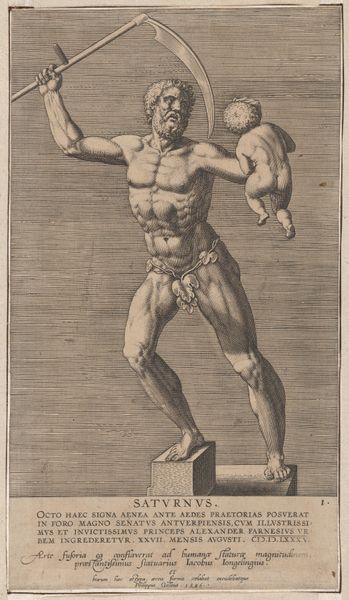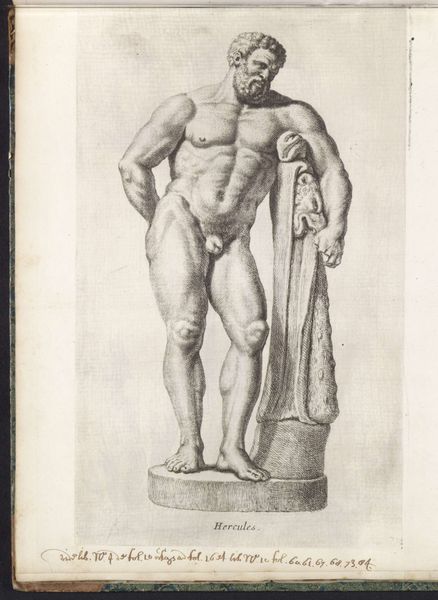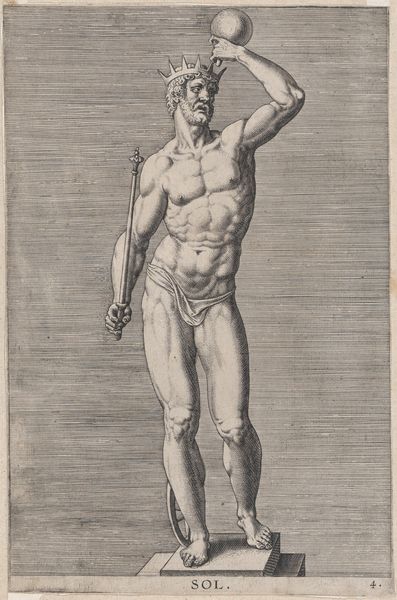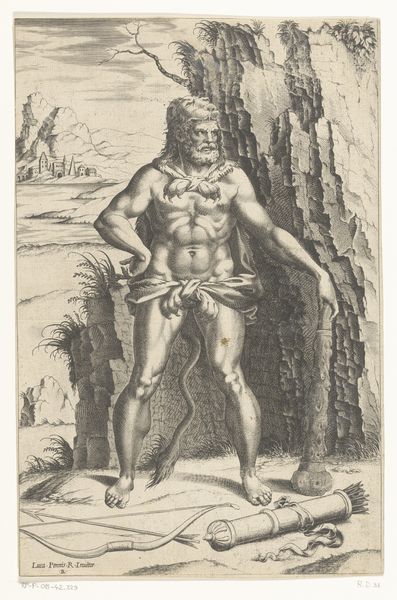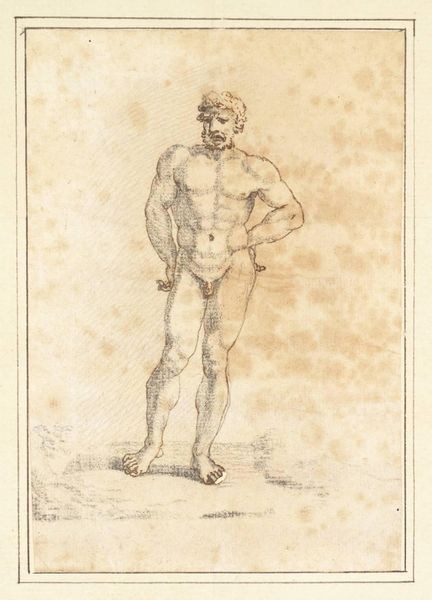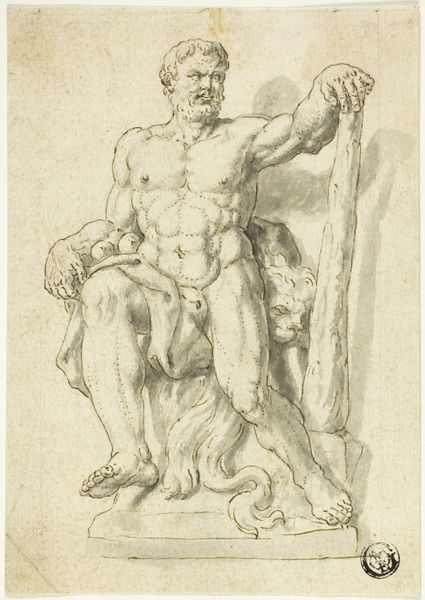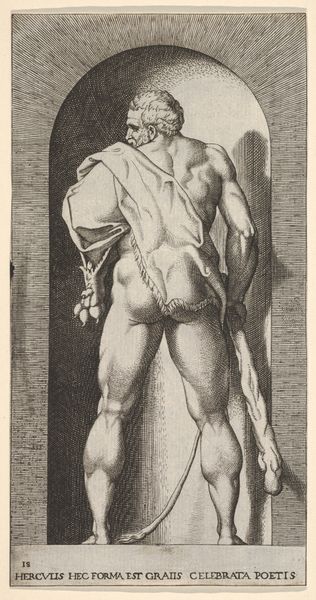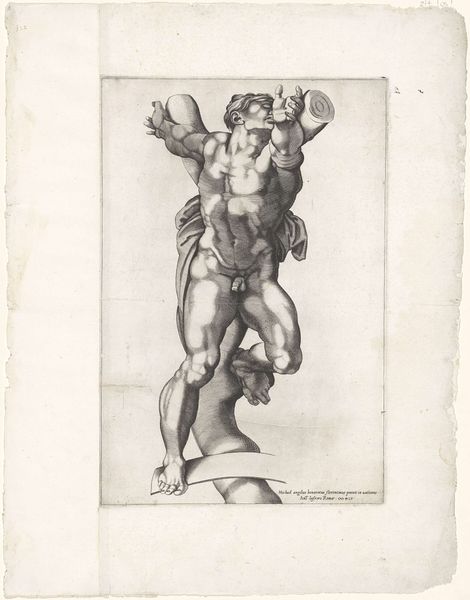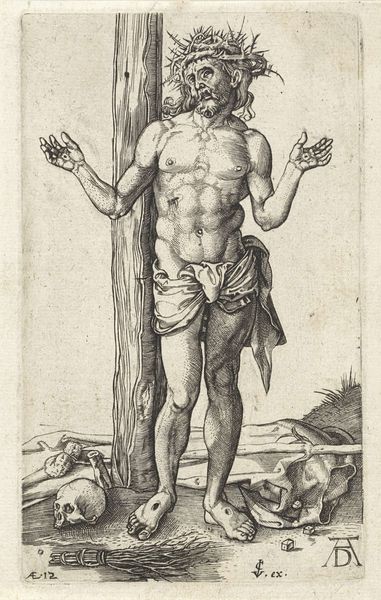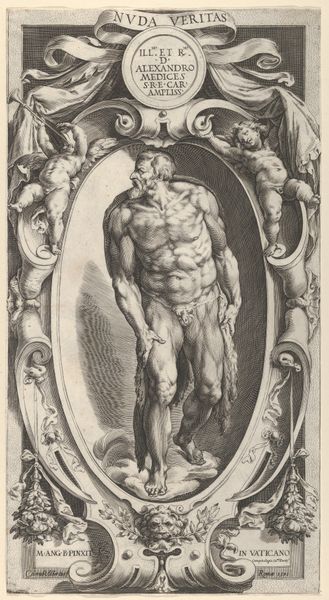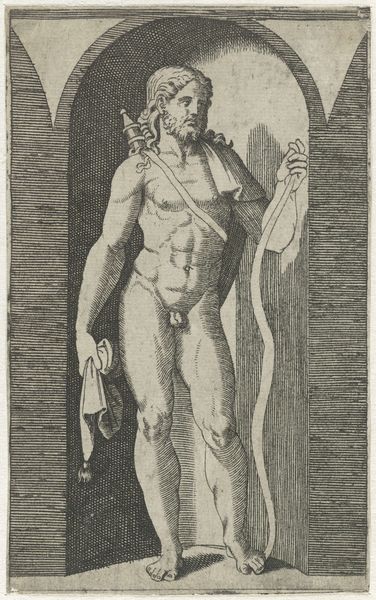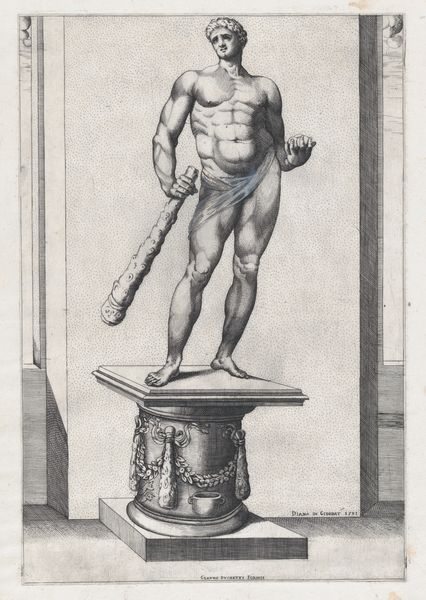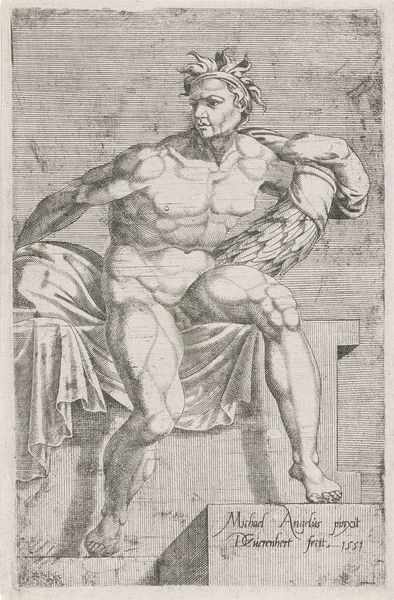
print, engraving
#
portrait
#
toned paper
# print
#
figuration
#
form
#
11_renaissance
#
pencil drawing
#
line
#
portrait drawing
#
history-painting
#
italian-renaissance
#
nude
#
engraving
Dimensions: height 527 mm, width 430 mm
Copyright: Rijks Museum: Open Domain
This is a print of a statue of Hercules, the classical hero known for his incredible strength. Note the club he holds, a symbol of his victories over beasts and monsters. The club is a constant attribute, identifying him across time and cultures. The lion skin, often worn by Hercules, is another potent symbol. It represents his triumph over the Nemean lion, his first labor, and signifies his invincibility and courage. Consider, however, how such symbols evolve. In medieval times, Hercules could be seen as a symbol of moral virtue, his labors reinterpreted as allegories of spiritual struggles. But in other contexts, the emphasis may shift to his raw power and unbridled passions. The constant recurrence of these symbols speaks to the human need to grapple with ideas of strength, perseverance, and the struggle against the irrational. The symbols surrounding Hercules, while ancient, maintain a presence in our collective consciousness. Their cyclical reappearance reveals how the past continually shapes the present, with ancient symbols taking on new forms.
Comments
rijksmuseum about 2 years ago
⋮
This engraving presents a draughtsman drawing a gigantic statue of the demigod Hercules. Beverland also had a copy of this impressive print in his private collection. However, he did not keep it intact. As he was wont to do with many of his prints, he took a pair of scissors to it. He cut out Hercules’ penis and incorporated it in a homemade erotic collage.
Join the conversation
Join millions of artists and users on Artera today and experience the ultimate creative platform.
